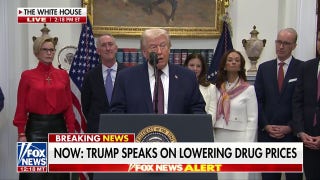Drop in U.S. consumer spending clouds Fed rate hike outlook
WASHINGTON – U.S. consumer spending fell in August for the first time in seven months while inflation showed signs of accelerating, mixed signals that could keep the Federal Reserve cautious about raising interest rates.
The Commerce Department said on Friday that consumer spending, which accounts for more than two-thirds of U.S. economic activity, fell 0.1 percent last month after accounting for inflation.
Analysts polled by Reuters had expected a 0.1 percent gain.
"Consumers took a breather in August," said Chris Christopher of IHS Global Insight.
Fed Chair Janet Yellen said last week she expected the U.S. central bank would raise rates once later this year to keep the economy from eventually overheating.
Prices for fed funds futures suggest investors see almost no chance of a hike at the Fed's next policy meeting in early November and roughly even odds of an increase at its mid-December meeting, according to CME Group.
The dollar was little changed against a basket of currencies while U.S. stock prices were trading higher.
Consumer spending, which has been robust in recent months, partially offset the drag from weak business investment and falling inventories in the second quarter when the economy expanded at a lackluster 1.4 percent annual rate.
Economists said overall economic growth could still accelerate in the current quarter even with August's slight decline in consumer spending.
The Atlanta Fed said growth appeared on track to accelerate to a 2.4 percent annual rate in the third quarter, according to its closely watched GDPNow forecasting model. It had forecast growth of 2.8 percent for the period earlier this week.
A tightening labor market appears to be pushing up wages and could fuel higher levels of spending in the future. Personal income rose 0.2 percent in August, in line with expectations.
Consumer prices also rose about as much expected in August, with the price index excluding food and energy increasing 0.2 percent from the prior month. That left inflation excluding food and energy at 1.7 percent in the 12 months through August, up a tenth of a percentage point from the prior month and closer to the Fed's 2 percent inflation target.
(Reporting by Jason Lange; Editing by Paul Simao)



















